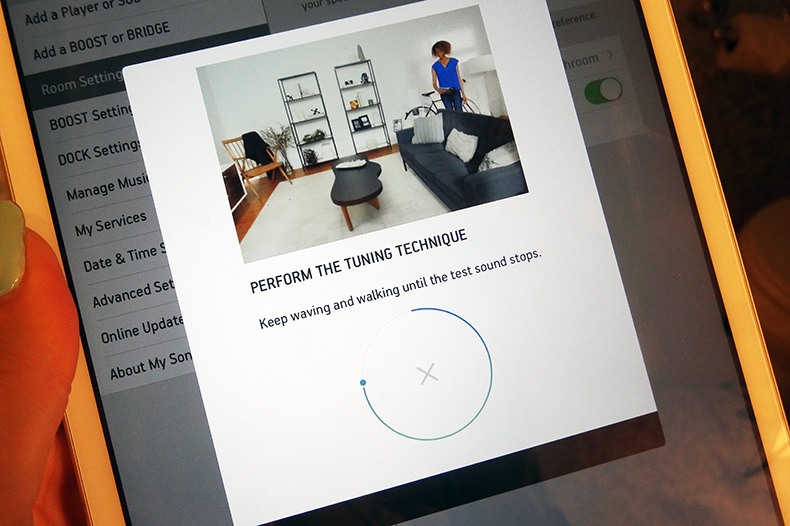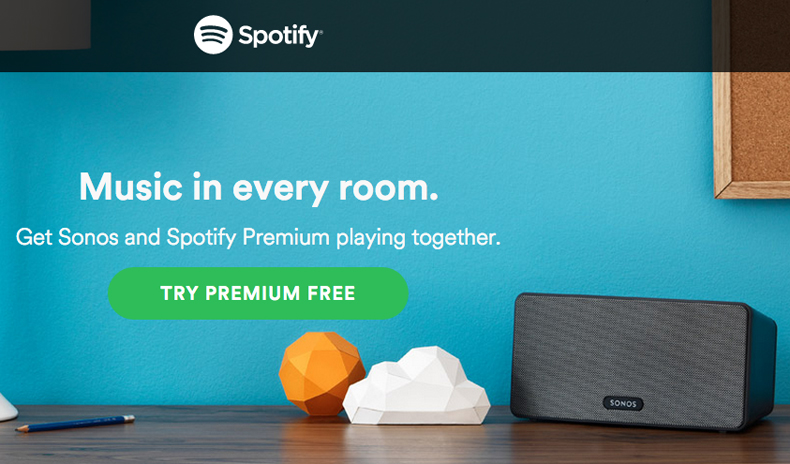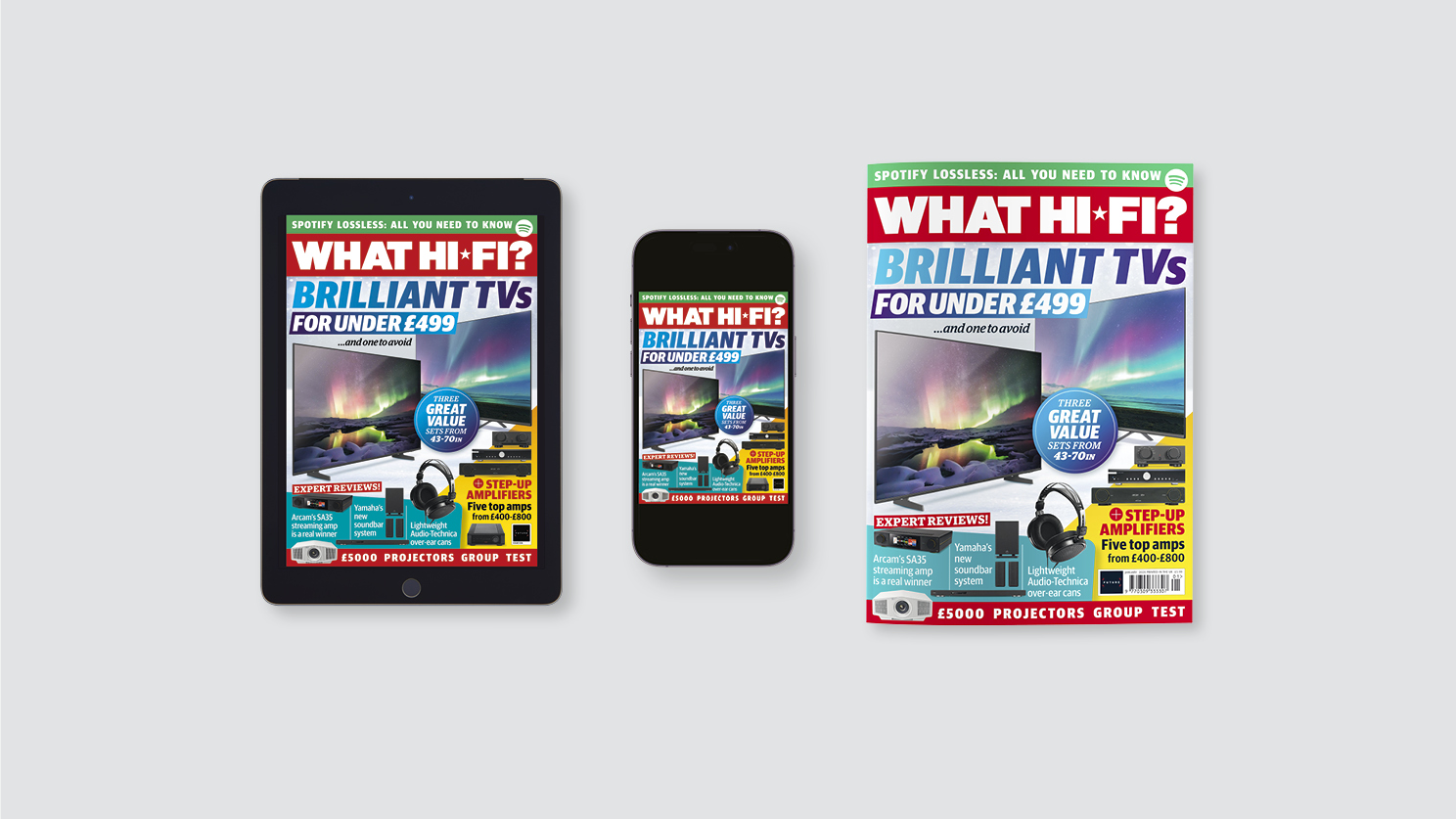Sonos plans for a "brighter and brighter" wireless music future
We talk to Sonos about its future plans, from incorporating Apple Music and improving Trueplay, to launching new products and staying ahead of the competition, and why the hi-res audio numbers don't quite add up...

It feels like the start of an exciting period for Sonos. After a year of heavy software focus, and two since we’ve seen any new hardware, this month Sonos announced its new Play:5 speaker, alongside its Trueplay speaker calibration technology.
We headed to Sonos’ Santa Barbara home to get hands on with both the new Play:5 and Trueplay, and also squeezed in some time to talk to Sonos about what's new and what’s next for the world’s biggest multi-room brand, from plans for new speakers to integrating hi-res audio.
Replacing a legendary product

With the new Play:5, Sonos is replacing an existing product for the first time, and its not shy about its intentions.
"The new Play:5 was made to crush the original," says Jon Reilly, senior product manager at Sonos. “We wanted to improve everything – we wanted more power, deeper bass, and a broader soundfield. This is the most powerful speaker we’ve ever introduced, and it will play cleaner and deeper than even the Playbar. If you do an A/B between this and the original, the difference is just ‘wow’."
That’s not to say Sonos isn’t proud of the original. Sonos co-founder Tom Cullen explains why the team picked the Play:5 as their next project.
“The original Play:5 is a legendary product. It has sold millions of units, been on the market six years and actually last year was its biggest. So this isn’t a case of replacing a product because it’s in decline. Instead it’s a case of looking at it as our flagship speaker, which was also our first. So a lot of our ideas were still in formation when we released the original, and it was time to put them to work at the top of the line and make it a more complete product.”
Aside from the internal changes, the Play:5 also debuts a new, simpler design language, with touch sensitive controls, three-way orientation and new materials. Tom Cullen says its something that we can expect to see introduced elsewhere in the range in the future, albeit not without good reason.
The latest hi-fi, home cinema and tech news, reviews, buying advice and deals, direct to your inbox.
“We will only replace speakers if we think we can make a good change to that experience. But yes, you can expect us to bring this design into more products. The design team has thought about other potential applications across the range – even Playbar. It’ll take time because of our methodical process but five to six years from now, everything will be in this language. And then the cycle will start again.”
MORE: Sonos Play:5 1st-gen review
New Sonos products
What about more products? Can we expect the product range to grow, or does Sonos see itself concentrating on improving its current line-up? As always, it’s a mixture of both.
“Look at the current Play:5,” says Tom. We’re going to be discontinuing it around the same time we’re releasing new software that could make it better and I just love that. We’ll continue to take good care of our customers like that.
“But I do think there’s room to expand. We have this mission to fill your home with music, so what I do when I’m in homes around the world is look around and think ‘do we have this covered?’ And there are still places left. We haven’t truly filled the home just yet, so you can expect more from us.
“Ultimately our goal is to make the smallest number of speakers that do the widest range of things, but I think the answer is a bigger number than we have now.”
Does that include portable? Chief product officer Mark Whitten tells us it’s certainly something the company is considering, if not actively working on.
“We’re always looking at it – we know a lot of people use their Sonos players outside using an extension cable so we’ll continue to look at it. We need to be sure we could get it right and in a way that would feel like a natural experience.
“Are we going to make a product for the beach? No. We’re in the home – that’s our focus and we’ll keep looking at all the options in front of us.”
Future-proofing

The new Play:5 features two, currently dormant, microphones, built in to futureproof the design, more than likely for future iterations of Trueplay. Michael Papish, director of platform strategy, says this is nothing new.
“We always think long and hard about our hardware choices and how to futureproof them for later updates. The Play:3 had dual wi-fi that was in there for years before it was any use to anyone, until we launched the Playbar. The mics in the Play:5 will be the same.
“If we think of this speaker as something that will last for 10 years, we have to think about what home listening could look like at that time. We know there’s a role for microphones, and think the ability to listen to environments and give that awareness is very important. We have some ideas about how they might be used but they’re not crystal clear just yet.”
Trueplay and improving with age
Trueplay is clearly something Sonos is hugely proud of. The result of 18 months of development, it feels almost as much of a big deal for the team as the launch of the Play:5. And yet, it seems it’s only the beginning.
Michael continues: “This is just the first phase. When we’re talking Trueplay, we’re talking a plan of 10, 15 years. I don’t think we’ll see Trueplay’s real potential for two or three years yet.
“We’re building smart speakers that we want to become more aware – the people that are in the room, the things they’re doing, the content they’re listening to. We want to be able to use software and sensors to make that speaker more responsive to that.”
Giles Martin, sound experience lead at Sonos, agrees.
“We have to start thinking of speakers in a different way. They’re no longer static objects, they are like wine, they’ll improve with age. The time your Sonos speaker will sound its ‘worst’ is the day you buy it – that’s an exciting prospect for me.”
MORE: What is Trueplay? How can you get it?
Keeping ahead of the competition

Over the past few years, the multi-room market has gone from complete Sonos domination to being quite crowded; very quickly. From all-in-one solutions such as the Samsung Shape and LG Music Flow to software-based options from the likes of Qualcomm’s AllPlay and DTS’s Play-Fi, we ask Tom Cullen how he feels about the competition.
“I don’t want to sound arrogant and say we don’t think about the competition. What I will say is that we don’t design products around them. We listen to everything, we do comparisons. We look for ideas too – we don’t think we have the monopoly on interesting ideas and we’re always super interested to see how others are thinking around it. But we don’t do things based on the competition. Getting hung up on what other people are doing is just distracting you from your goal.”
So for a man with a software background (Cullen was a senior vice president of Software.com in the 90s before co-founding Sonos in 2002), how does he feel about the software approach – is it a clever move?
“There are two schools of thoughts on this stuff – there’s the Microsoft model, and the Apple model – one breaks down the bits and sells it off, the other does it all themselves. For a while, Apple looked like it had gone the wrong way, but as the fullness of time played out, it turned out it had a richer experience – both on the desktop and mobile. We’re betting on the same thing – we think that you have to make the whole thing in order to deliver the best experience. Do I know how it’ll play out? Obviously not, but we’ve certainly placed our bet and placed it large that delivering a complete experience is the trick.”
MORE: How to get multi-room music
Hi-res numbers don't add up
While we’re talking about the competition, we can’t help but ask Sonos about its feelings on hi-res music. No matter who we asked, the answer was the same – don’t hold your breath.
“We’ve looked really hard at it”, says Tom. “Of course we want to make sure we’re not missing anything and we feel pretty good that we’re not. There are arguments you could make about deeper bit depth, but we are unable to make a meaningful argument on sample rate. We tried, we can’t – the math just isn’t there.”
Giles Martin agrees: “There’s a huge, cheap miscommunication about high-resolution music. Manufacturers try to put a number to it, like 0 to 60 in a car, and it’s not that simple. I think we need to improve the overall quality of listening full stop. When everyone is listening to the quality of music they were listening to 15 years ago, then we have a discussion about pushing it further.
“Once we get to that stage where there is a huge consumer demand or it, we should accept it. For now, there are neither enough tracks, nor enough value in it for the majority of consumers for us to chase it.”
We ask about downsampling, which Sonos currently doesn’t offer - meaning any high-res music you own is completely unplayable on Sonos unless you downsample it yourself.
Jon Reilly admits: “We want to play everything, so we should do and that’s fair feedback. It’s something we’re considering.”
MORE: Hi-res audio: The science behind the numbers
Apple Music, Spotify et al.

Finally, we want to pick up with Sonos on its partner relationships. It’s long been quick to sign up new services, offering the whole experience within its own app, helping with handy features like universal search and meaning there’s no flicking around between screens.
While that’s great for simplicity, it has meant missing out on some of the user experience available natively. Not for long, says Tom.
“I’ll admit we weren’t always great at maintaining our relationships with our partners and we lost sight a little, but we’ve brought in people to help change that and take it to another level where now we’re working much closer together. We’ve really come to realise that there’s no clear line between us and them in the eyes of our users. So we have to take a much deeper responsibility for that complete experience.
“We’re not proud of what happened with Spotify. We were really good with them when we launched and then we drifted. But software is a stream and not a pond and if it’s not flowing you’re doing something wrong. Some of our recent updates to the app will show we’re starting to flow again, we’re getting there. We lost our way but we’re keeping at it and getting better.”
And Apple Music?
“We’re working with them on the development of it. Obviously we want it to be right but I’d expect it to go into beta in the not too distant future. I’d anticipate before the end of the year – we’ve been pleasantly surprised at how open they’ve been to working with us.”
MORE: 24 Sonos tips, tricks and features
A bright time for music
So it seems that a period of learning and evolution lies ahead of Sonos, with much in the pipeline that we don’t even know about yet. Jon MacFarlane told us how he sees it.
“It’s a fantastic time for music – after a dark, dark period it’s only going to get brighter and brighter. It really is a fantastic time – a once in a lifetime time. And I think we have a wonderful role to play in all of that.”
MORE: Sonos - everything you need to know
See all our Sonos reviews and news
Verity is a freelance technology journalist and former Multimedia Editor at What Hi-Fi?.
Having chalked up more than 15 years in the industry, she has covered the highs and lows across the breadth of consumer tech, sometimes travelling to the other side of the world to do so. With a specialism in audio and TV, however, it means she's managed to spend a lot of time watching films and listening to music in the name of "work".
You'll occasionally catch her on BBC Radio commenting on the latest tech news stories, and always find her in the living room, tweaking terrible TV settings at parties.

